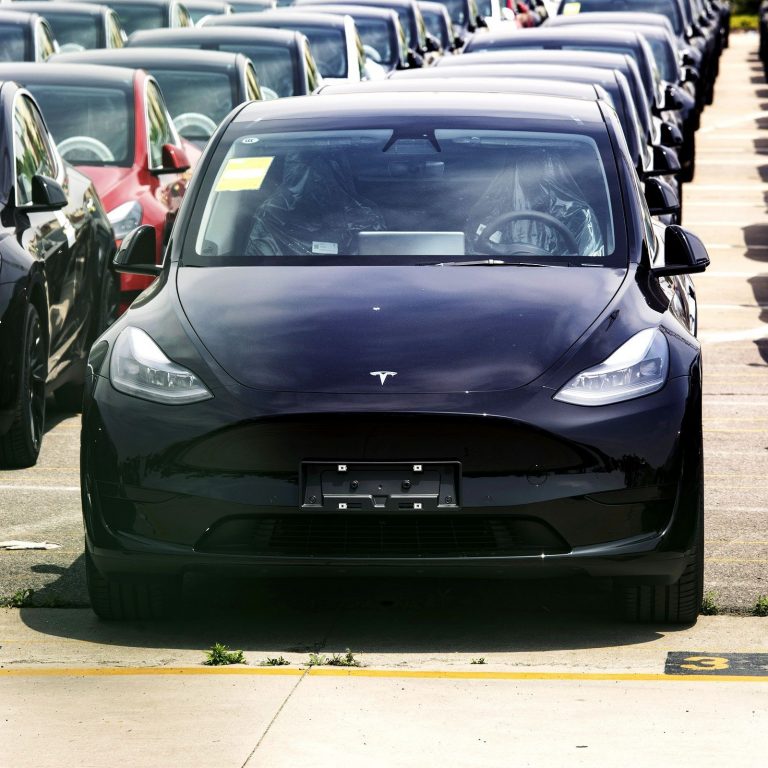
Tesla has begun quietly testing its long-promised autonomous ride-hailing service among employees in Austin and the San Francisco Bay Area, as the company races to reclaim ground in a segment it once vowed to dominate.
The rollout comes ahead of a planned June launch of the company’s first commercial robotaxi fleet in Austin.
In a post shared Wednesday on its official X handle, the electric vehicle (EV) maker announced: “FSD Supervised ride-hailing service is live for an early set of employees in Austin & San Francisco Bay Area.”
Register for Tekedia Mini-MBA edition 19 (Feb 9 – May 2, 2026): big discounts for early bird.
Tekedia AI in Business Masterclass opens registrations.
Join Tekedia Capital Syndicate and co-invest in great global startups.
Register for Tekedia AI Lab: From Technical Design to Deployment (next edition begins Jan 24 2026).
Tesla’s “FSD” — short for Full Self-Driving — is its advanced driver assistance software, which enables some automated driving functions but still requires a human behind the wheel. Despite the branding, the system does not yet provide fully autonomous driving.
While thousands of Tesla owners already use FSD in its current supervised form, Wednesday’s announcement marks the first formal indication that Tesla is rolling out an accompanying ride-hail app — a critical component of its robotaxi vision. This app, though still in early testing, is expected to enable non-Tesla owners to summon autonomous rides in Tesla vehicles, a pivot away from the company’s historic ownership-centric model.
In a promotional video accompanying the announcement, Tesla showcased a Model 3 sedan equipped with a rear-seat touchscreen displaying estimated time of arrival, music and climate controls, and an emergency stop button — features intended to simulate a passenger-centric, driverless experience. However, a disclaimer at the bottom clarified that a safety driver remains present and that “FSD (Supervised) does not make the vehicle autonomous.”
A Comeback Amid Waymo’s Lead
Tesla’s renewed push into autonomous ride-hailing comes as rival Waymo, owned by Google parent Alphabet, expands its footprint across several U.S. cities with fully driverless vehicles. Waymo already operates commercial robotaxi services in Phoenix and parts of San Francisco, with plans to enter Los Angeles and Austin later this year. Unlike Tesla, Waymo’s service is fully autonomous, operating without safety drivers in many cases.
Waymo’s steady progress and public accessibility have allowed it to eclipse Tesla in the race to commercialize autonomous mobility — a domain Elon Musk once declared Tesla would dominate by 2020. Back then, Musk had predicted that millions of Tesla cars would soon be earning income for their owners as part of a global robotaxi network.
That didn’t happen.
Years of regulatory hurdles, technological setbacks, and growing scrutiny over the safety of Tesla’s FSD software left the company trailing in a space it helped popularize. While Tesla continued improving its vision-based approach, eschewing sensors like LIDAR that companies like Waymo rely on, its robotaxi plans all but disappeared from public discourse.
From Dormancy to Lifeline
Now, the sudden revival of Tesla’s autonomous ride-hailing plans appears less like an expansion and more like a lifeline. The company is grappling with a slowdown in global EV sales, increasingly blamed on a mix of market saturation, price wars, and reputational damage tied to CEO Elon Musk’s outspoken right-wing politics.
Over the last year, Musk has courted controversy on his social media platform X, alienating progressive customers in key markets like California and Europe, while Tesla’s share price has suffered repeated setbacks. This political drift has coincided with a steep drop in demand for Tesla vehicles and mounting competition from both Chinese automakers and legacy car companies entering the EV race.
With its core business under pressure, including the flop of cybertruck, Tesla appears to be returning to the autonomous ride-hailing dream as a potential pathway to recovery and long-term growth. During the company’s Q1 earnings call on Tuesday, Musk confirmed that Tesla plans to deploy 10 to 20 robotaxis on the streets of Austin by June. However, he offered few specifics, including whether those vehicles would operate without safety drivers or when Tesla might begin charging customers.
That ambiguity adds to regulatory challenges, particularly in California, where the company has only secured permits to test vehicles with a human driver. Launching a fully driverless commercial service would require Tesla to obtain additional permits from the California Public Utilities Commission and the Department of Motor Vehicles — approvals that competitors like Waymo and Cruise spent years working toward.
In January, Musk declared that Tesla’s upcoming robotaxi would ship without a steering wheel or pedals — a reference to the so-called “Cybercab” concept. But for now, Tesla is leaning on its existing fleet, including the Model 3 and Model Y, to begin limited service.
The return to the robotaxi narrative reflects more than just a technological milestone, it is believed to be an attempt to reinvigorate investor confidence and reset the narrative around Tesla’s future. For years, the company sold itself not merely as a carmaker but as a software and AI powerhouse poised to disrupt mobility. Failing to deliver on the robotaxi promise had cast doubt on that pitch.



